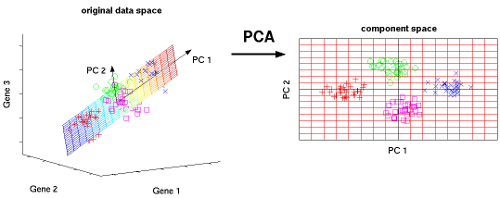A PCA will reduce the dimensionality of the original data and construct a subspace generated by eigenvectors of which each represents the (next) highest variance to explain the data.
Let's start at this subspace: A PCA has been performed and we have a look at the according subspace now:
Now let's assume there are outliers (however where exactly). How can they be detected now?
So far, I know there are two methods:
Track the angle(s ?) between the PCs
Check the number of PCs
I think both are not robust, because new or more data will probably change the angles without providing an outlier. The number of axes makes more sense but still I can construct situations in my head where new data might cause introducing a new axis without making all the data there outliers. I thought of
using a distance/defined radius to scan for new outliers but I can hardly find according approaches? On
Why is PCA sensitive to outliers? it is explained why it is sensitive to Outliers, this can probably used as a tool, as well.
In other words: How exactly is PCA used to detect outliers respectively how are they detected after performing the PCA?

